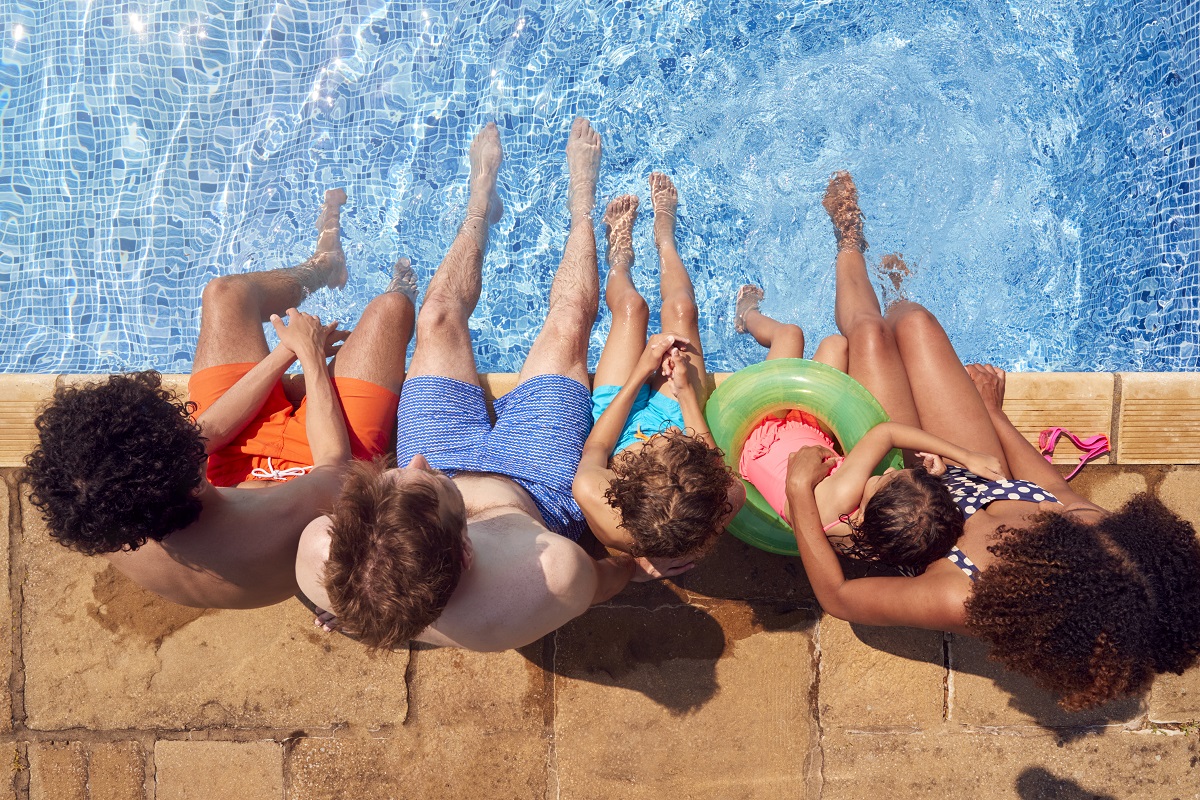Swimming is a great way to stay active and improve your overall fitness but it can be challenging to find the time to swim regularly, especially if you don’t have a membership to a pool or are uncomfortable swimming in public. This brings us to the question, how do you practice swimming at home? You don’t need a full-size swimming pool to practice at home yet having some basic swim gear such as a kickboard, swimming boards and resistance bands can help you simulate the swimming experience. Practicing swimming at home is a great option that can help you improve your technique, endurance, and overall fitness.
How do beginners practice swimming?
For those just starting out with swimming, it does not have to be done at a public pool, lake, or beach. You can practice swimming at home in your own backyard or even indoors where there is enough room! Setting goals and tracking your progress is key to improving. During practice sessions, focus on taking turns, avoiding tension in arms and legs, and increasing distance while sustaining correct form. As you become more familiar with the motions of swimming you can add intensity to your routine such as kickboard drills or focusing on specific strokes. All of these practices will help you improve and increase your confidence in the water!

How do you practice swimming at home?
The Amateur Swimming Association outlines five stages of learning swimming, with stage one and two being the focus for beginners. In stage one, learners become accustomed to being in the water, learn basic safety skills, and master floating and moving around the pool. In stage two, they develop water confidence by swimming with a float and across the pool while incorporating skills learned in stage one. Our blogs section has a complete guide to understand the trajectory of becoming an amateur swimmer.
How many swimming lessons does it take to learn to swim?
The number of swimming lessons needed for an individual to learn how to swim depends on various factors such as their natural abilities to learn, their comfort levels in water and the number of hours they are able to practice outside regular swimming lessons. Keep in mind that learning to swim is a gradual process and it may not always be linear. There could be ups and downs along the way. Generally, beginners require 12 to 15 swimming lessons to learn the basics and an additional 12 to 15 lessons to become a proficient swimmer. Ultimately, the key is to remain patient, stay positive, and keep practicing!
What is the average age to learn to swim?
One of the key features of swimming as an exercise is that it is suitable for all ages. Therefore, anyone can learn it. There is no specific age at which someone should learn how to swim, as it can vary. However, it is generally recommended that children start learning how to swim at a young age, as they tend to be more adaptable and less fearful of the water than older individuals. You can start a kid’s swimming journey by making them practice swimming at home and later on enrol them into a swimming club.

On average, kids start learning to swim around their third birthday but this is not fixed. Whether someone starts learning to swim at a young age or as an adult, the important thing is to find a supportive, safe, and engaging environment. With dedication and practice, anyone can become a confident and skilled swimmer, regardless of their age.
How much are private swimming lessons in London?
The cost of private swimming lessons in London depends on various factors such as the instructor, the length of the sessions and the location of the pool. Private lessons offer a personalised approach , tailored feedback, and a more flexible schedule than group lessons. Overall, the cost of private swimming instructors in London may be higher than group lessons but the individualised attention and benefits can make it a worthwhile investment for those who are serious about improving their swimming skills and want to practice swimming at home.
Can you practice swimming without water?
While you can’t fully replicate the experience of swimming without water, there are exercises you can do to help improve your swimming skills. For example, you can practice your arm strokes and kicking on land using resistance bands or bodyweight exercises. You can also practice your breathing and technique in front of a mirror to ensure you’re maintaining proper form.
Summary of how do you practice swimming at home?
In conclusion, practicing swimming at home is a great option for those who don’t have access to a pool or are uncomfortable swimming in public. By starting with the basics, working with a qualified instructor, and practicing consistently, you can improve your swimming skills and achieve your goals. Whether you’re a beginner or an experienced swimmer, there are always ways to improve and grow. If you’re interested in taking your swimming to the next level, consider working with a personal trainer or checking out some of our other articles on swimming techniques and training.
